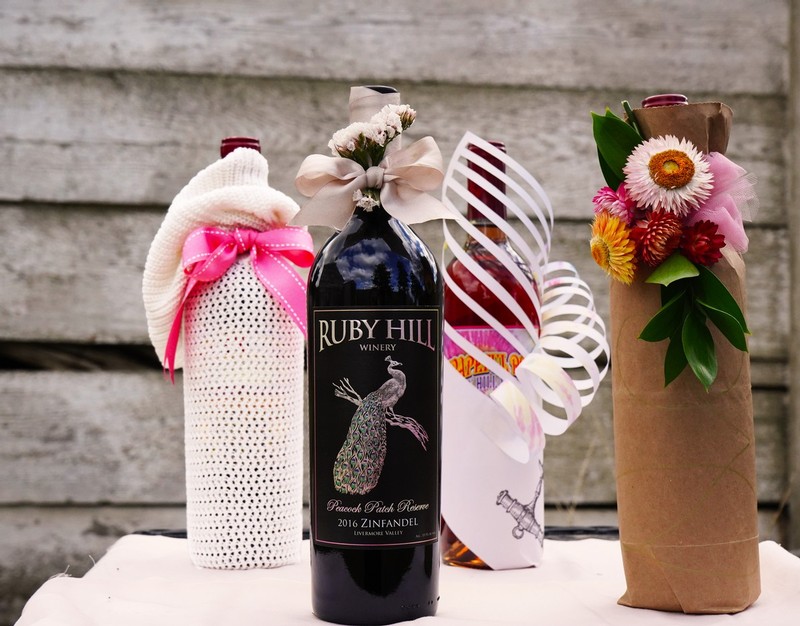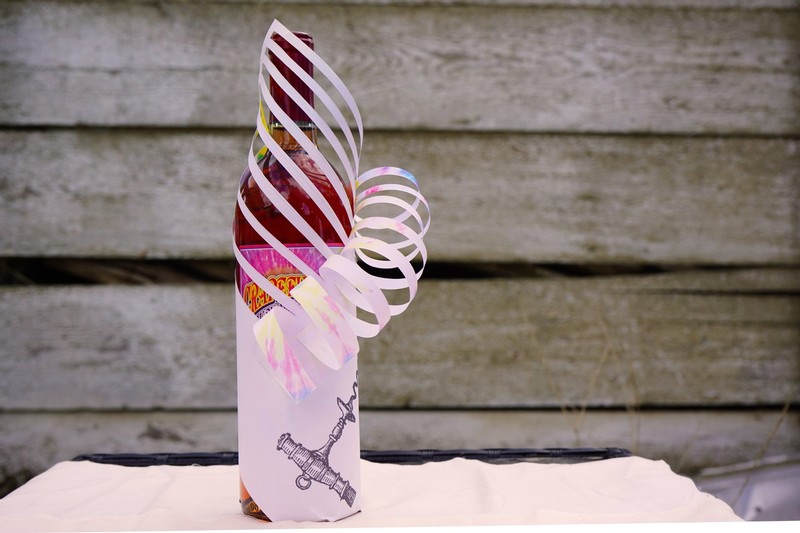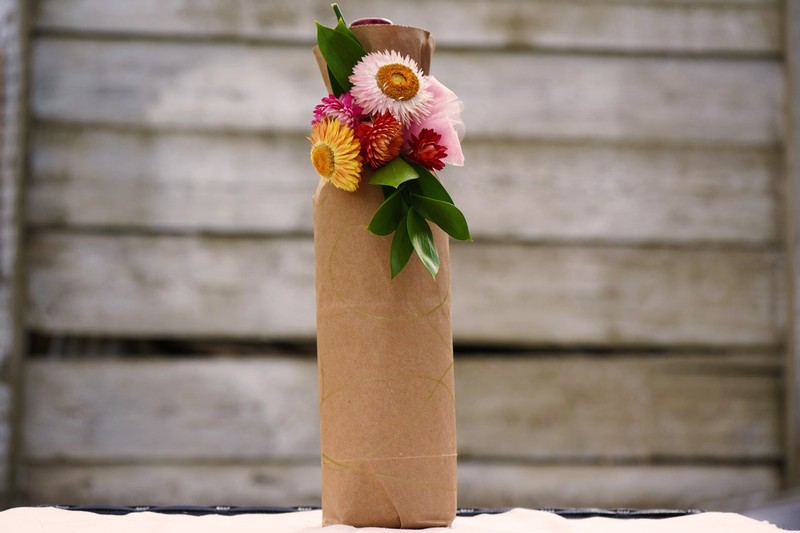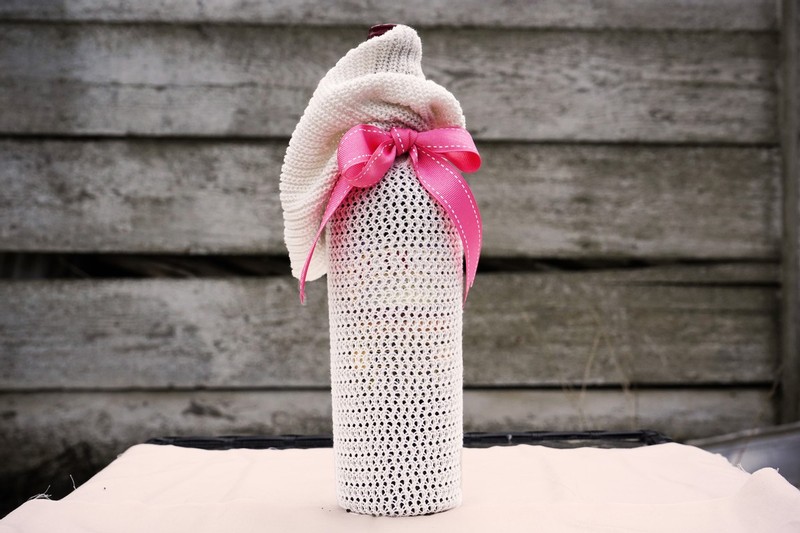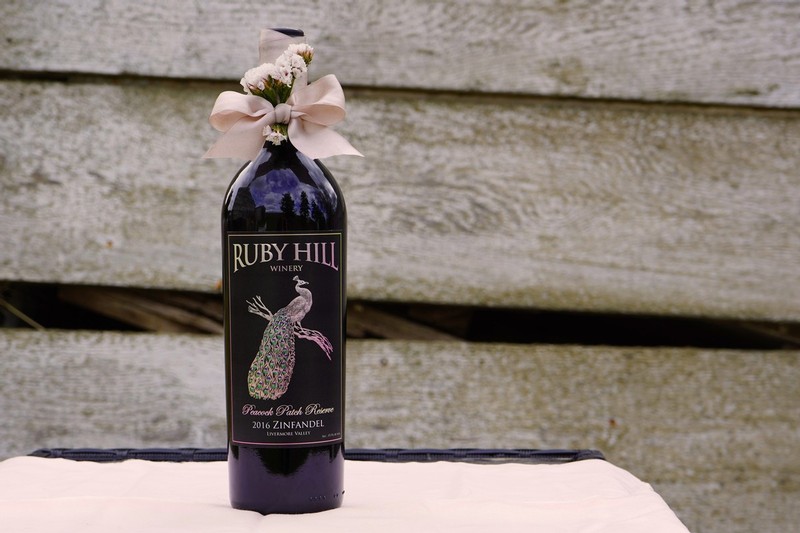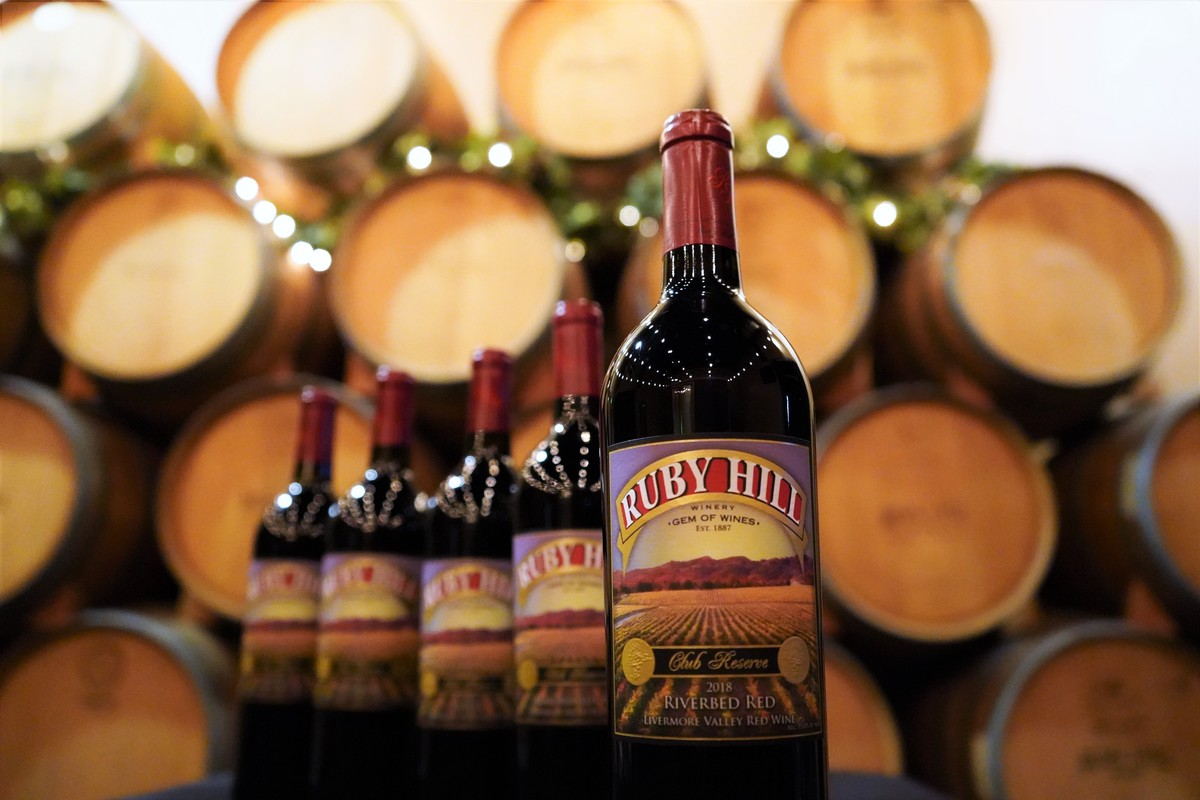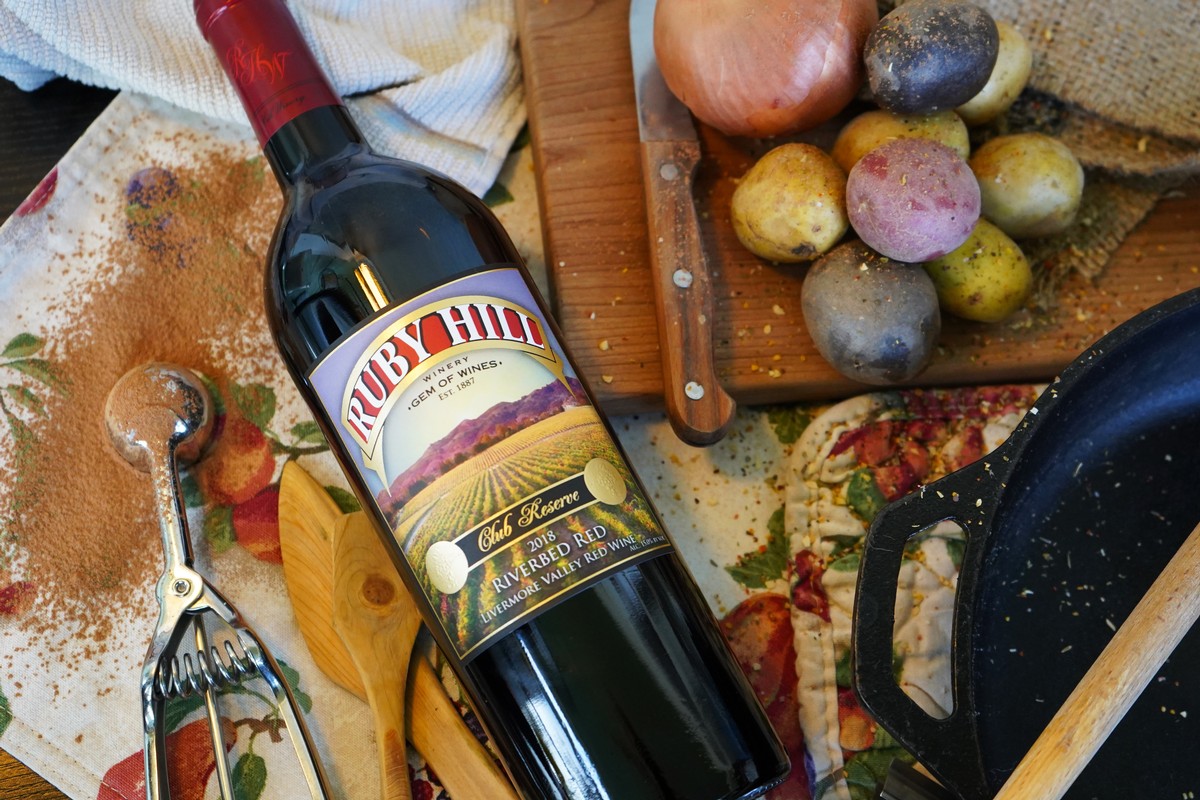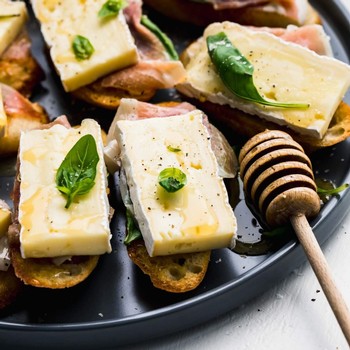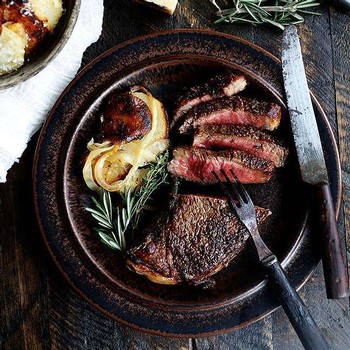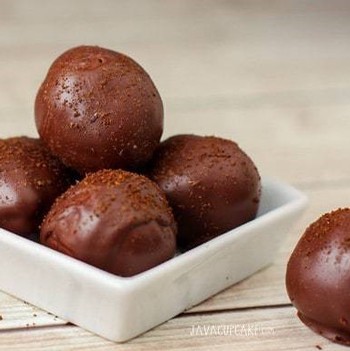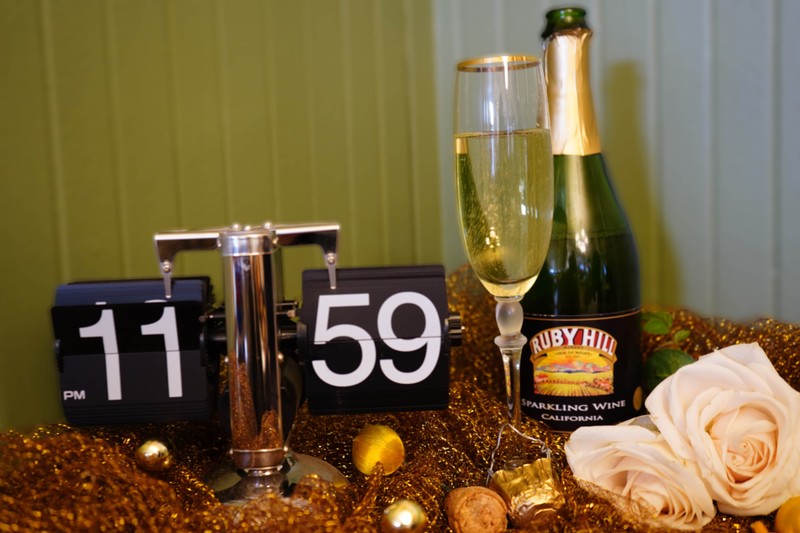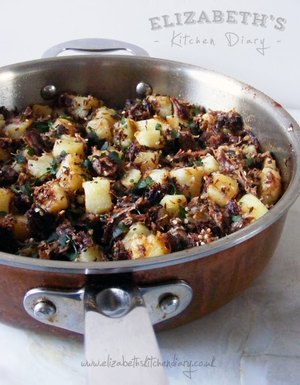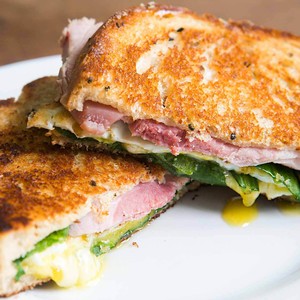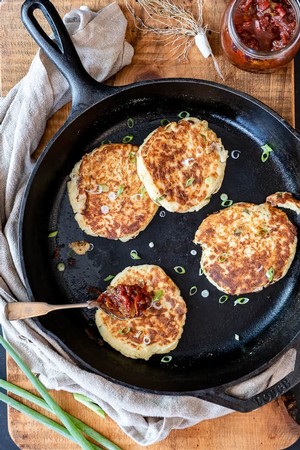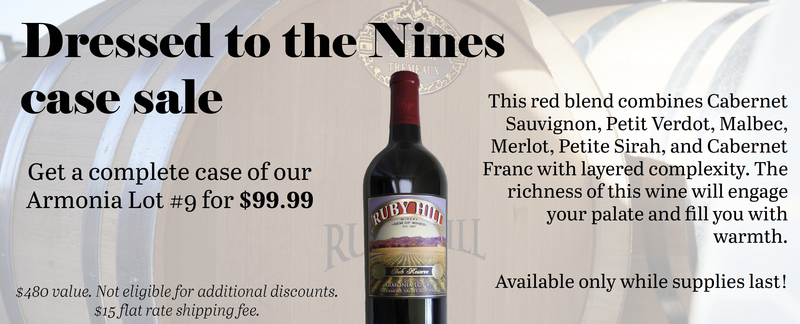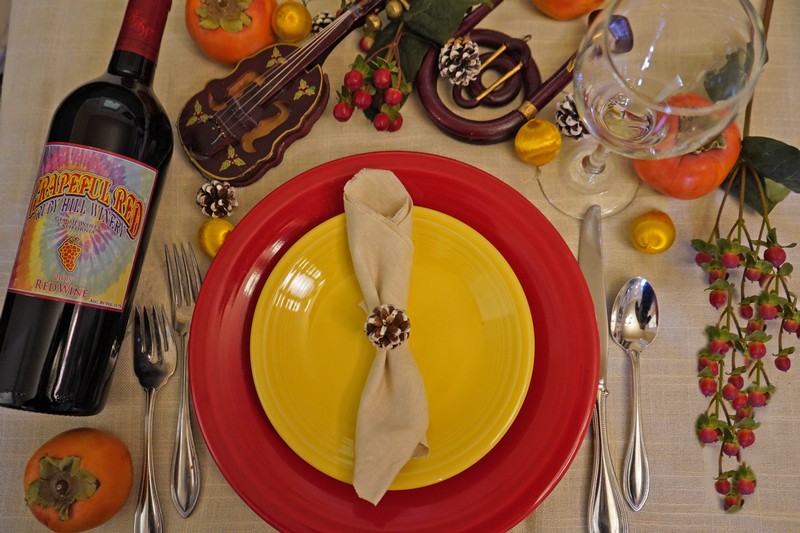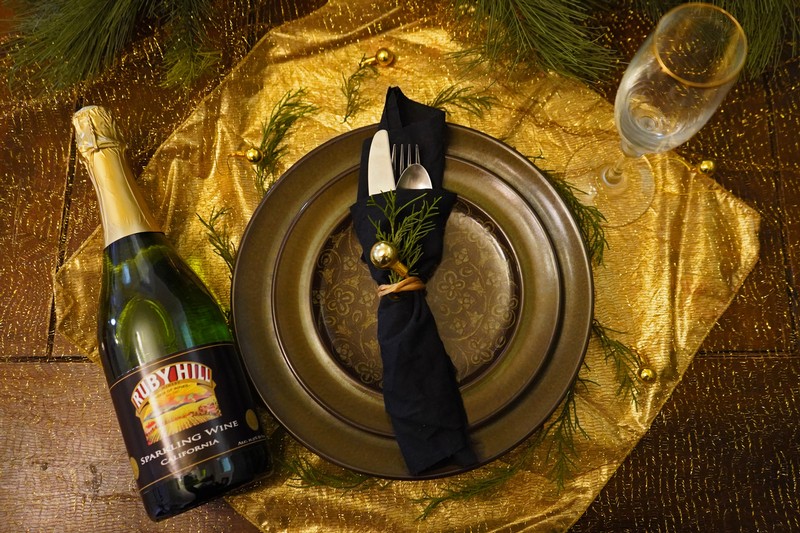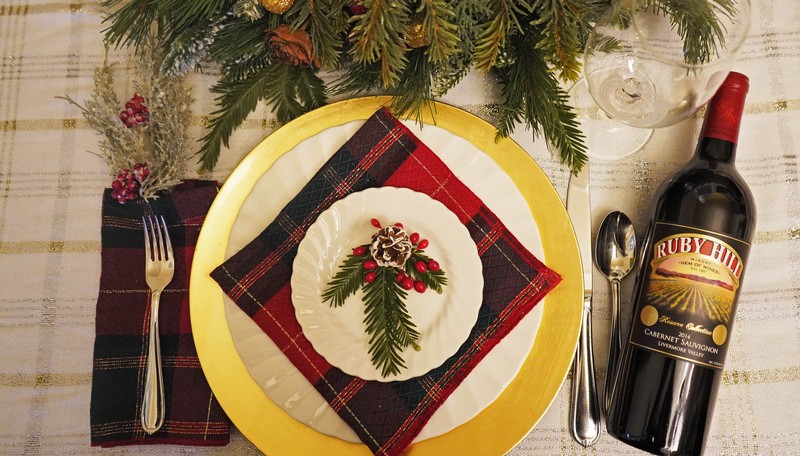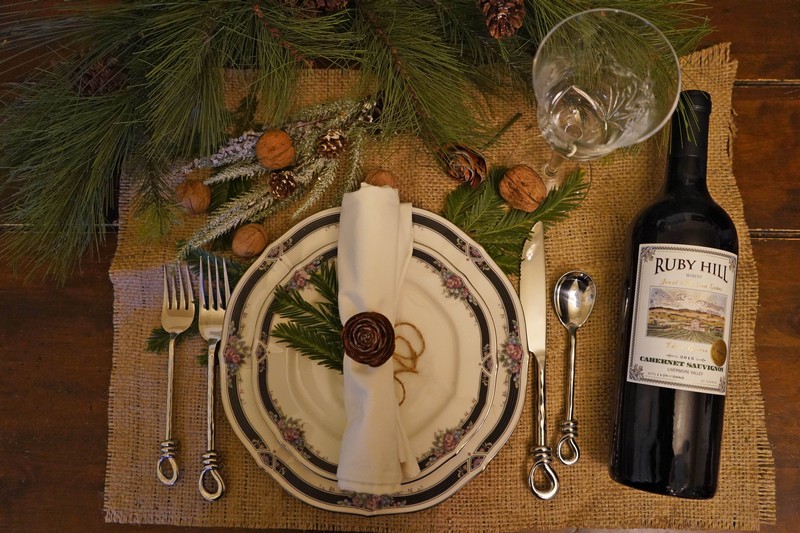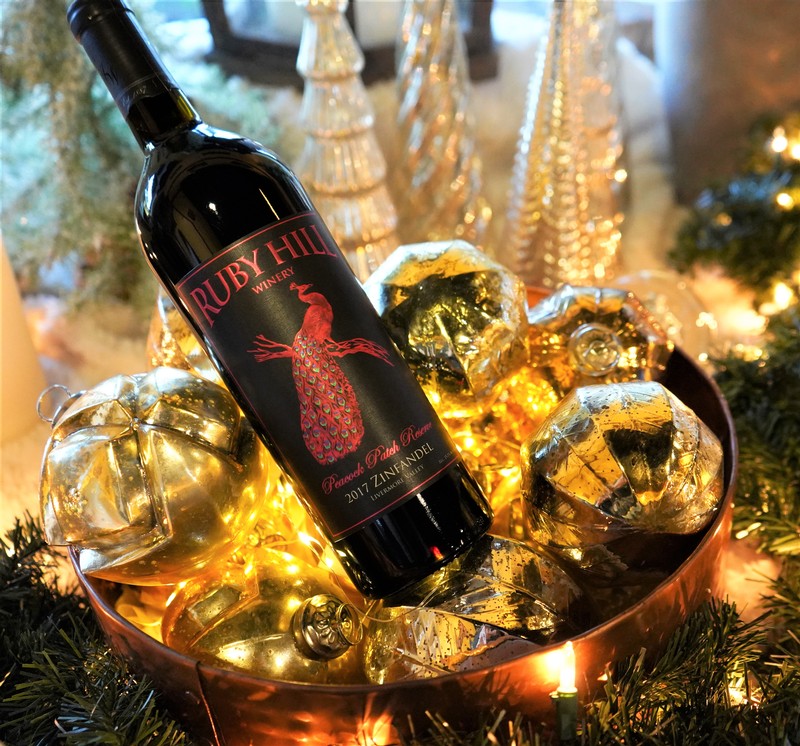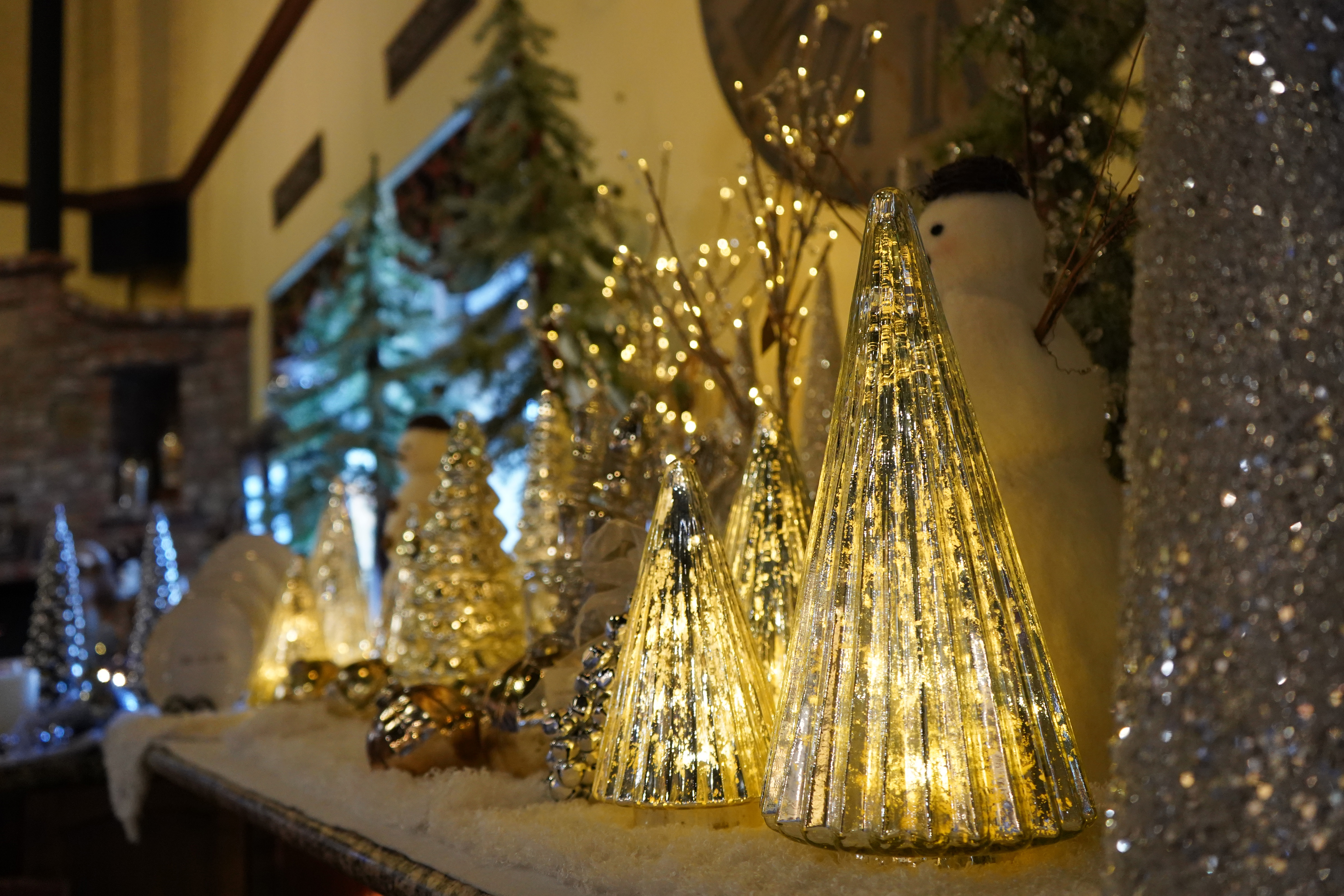Give Love, Give Wine
It's almost Valentine's Day! No matter your relationship status, this holiday is a perfect time to spread some love. Whether you're giving to coworkers, friends, or a special someone, we think the best gift to give (and receive) is a beautiful bottle of wine! Since we're all about personal touch, we've come up with a few special ways to gift wrap any wine bottle. Most of our wrapping paper and gift bags are covered in reindeer and candy canes anyway!
We love roses at Valentine's day, but we love rosé even more! To wrap our Grapeful Rosé, we created a paper sculpture out of some colorful tie dye stationery. You can use plain white paper, decorated stationery, or even paper with a custom written message. This elegant sculpture is simple, affordable, and classy. To download a printable template for this sculpture, click here.
This lovely, rustic gift (with a Reserve Cabernet Sauvignon hiding inside) was created from a reused paper grocery bag and a small bundle of strawflower blooms. To use the grocery bag, simply cut out the bottom, roll up the bottle, and cut off the excess as needed. Feel free to design the paper however you like! For the floral element, blooms like strawflowers are resillient and ideal for wrapping, but any fresh flowers would work. Tie the flowers around the neck of the bottle with some tulle and you've got the perfect personal touch!
It's still winter, but this bottle of Cielo Viola won't tremble in the cold! If you've done some closet cleaning lately and have any long sleeved garments making their way to the donate pile, try upcycling. The bell-sleeve of this knit sweater gives a hint of coziness and style!
Lastly, choose a bottle that just begs to be shown off! Instead of wrapping up this Peacock Patch Zinfandel, we let its natural beauty do the work. This pearlesque peacock is eye-catching all on its own. For a little pizzaz, we've wrapped the neck of the bottle in a coordinated satin ribbon and accented with pale statice flowers.
No matter how beautiful the wrapping, the most exciting part of gifting wine is opening it up, especially if it means sharing with someone you love. We hope you have a wonderful Valentine's day!
A Wine by Any Other Name...
We are proud to offer exclusive blends to our wine club members. Even though the blends may vary slightly from one vintage to another, the quality and experience hold true. As we welcome a new wine to our Club Wine portfolio, we think it is fitting to share about the inspiration behind the names of each wine.
Armonia
Armonia, pronounced "arm-o-nee-uh" is Italian for “harmony” or “balance.” Musically speaking, harmony can be created by three different instruments all playing different notes. When these noises combine, the resulting sound is beautiful, and greater than the sum of its parts. The same is true for our Armonia. The philosophy is to create rich harmony without boundaries. Instead of having a specific vintage assigned to it, our Armonia is designated by “lots.” Each lot is a harmonious blend of multiple varietals and vintages and crafted exclusively for our valued members. Currently, we are offering the Armonia Lot #10, which is a careful balance of Cabernet, Malbec, Merlot, Petit Verdot, and Petite Sirah.
Patchwork
This blend is named after the appearance of our estate vineyards. From an aerial view, our vineyard blocks create a lush spread across the landscape. These vines are grouped by their varietals and create a “patchwork” of vineyards on the estate. Beginning in the 1800s, patchwork quilts were an important pastime, especially among women in midwestern America. Patchwork quilts would often incorporate meaningful scraps of fabric, even including pieces of wedding gowns or special baby clothes. Similarly, the wines we select from our patchwork of vines are priceless and improve with time. Our current vintage, the 2017 Patchwork, smoothly stitches together Merlot, Zinfandel, and Petit Verdot. If you’d like to taste an exclusive blast from the past, our 2013 Patchwork is featured in our Winter Red Case Sale!
Cielo Viola
Cielo Viola is an Italian phrase, pronounced like two instruments (cello and viola) which can be translated as either “Violet sky” or “Violet Heaven.” According to meteorologists, purple skies are the result of the sun hitting the atmosphere at a low angle, such as at dawn and dusk. Instead of the normal golden hue of a sunrise or sunset, water droplets and other particles in the air scatter the wavelengths of light. What reaches our eyes, then, is a most lovely purple. We capture and celebrate this beauty in the label of all of our club wines, which feature the vineyard at sunset, under a violet sky. We think that the experience of the Cielo Viola is a beautiful one, just like sitting under the breathtaking canopy of a violet heaven, sipping a glass of your favorite wine. The 2017 Cielo Viola is a heavenly blend of Zinfandel and Petite Sirah.
Intesa
Italian word meaning something like a friendly agreement. In the creation of blends, our winemaker is tasked with creating agreement among many elements in the wine. Every blend should feature harmony between the acidity, tannins, sweetness, oak and fruit concentrations, among other factors. Every individual has their own definition of a perfectly balanced wine, where everything is in agreement, based on their own palate and preferences. There is also an objective nature to a wine that is in agreement with itself. All of the best features of the wine must have ideal interplay, and in this way have agreement. Our 2016 Intesa is a delicious union of Barbera and Cabernet Sauvignon.
Riverbed Red
The name of our new Club Wine honors the long history of agriculture in the Livermore Valley. Our historic winery was once fed by a stream that ran through the estate. In 1883, Jon Crellin selected the rocky ground of the dry riverbed to plant the original Ruby Hill vineyards. The gravelly soil drains well and puts slight stress on the vines, leading to perfectly flavorful grapes. Ruby Hill earned its name from the rich red soil of this region, and our Riverbed Red recognizes the legacy of Ruby Hill in the Livermore Valley. The 2018 vintage of this all-new blend includes Cabernet Sauvignon, Syrah, and Petite Sirah.
In addition to access to our club-exclusive wines, Club Members can enjoy discounts on all wines and merchandise, as well as complimentary tastings.
To find out more about membership at Ruby Hill Winery, click here.
Introducing the New Ruby Hill Riverbed Red
Here at Ruby Hill Winery, we are always looking to dazzle our patrons with delicious and exciting wines. This month, we are thrilled to announce our all-new Riverbed Red! This 2018 red blend will join our repertoire of magnificent Club-exclusive wines.
The Riverbed Red is comprised of Cabernet Sauvignon, Syrah, and Petite Sirah. The nose is rich with notes of dark fruit, cocoa, chocolate and plums. On the palate, this wine has a huge mouthfeel and lively flavors of fruit and wild blueberries. The acidity is well balanced, and the tannins are smoothing out and will continue to integrate. Hints of oak and cocoa mingle to bring out a trace of s'mores in the long finish.
Unveiling the Riverbed Red has put us in a celebratory mood. To commemorate this event, we’ve collected up recipes to make a 3-course meal to perfectly compliment this new wine.
Appetizer: Brie Crostini with Prosciutto & Honey
recipe from Platings and Pairings
We are in love with this mouthwatering combination of creamy, salty, and sweet. Unbelievably easy to put together and perfectly classy, it’s an ideal treat to start off your evening. The tannins in the Riverbed Red pair perfectly with a plump, soft brie, complimented by the sweetness of the honey.
Entree: New York Strip Steak with Lyonnaise Potatoes
recipe from Chef Billy Parsi
This entree is a scrumptious, careful take on classic meat and potatoes. The Riverbed Red stands up to the salt and pepper crust on the steak, and the fruitiness of the wine is an excellent companion to the flavor of the strip steak. The big mouthfeel pairs with the heartiness of this entree, and the balanced acidity harmonizes with the rich lyonnaise potatoes.
Dessert: Espresso Cocoa Truffles
recipe from JavaCupcake
For dessert, we’ve chosen truffles, our favorite decadent delight. Not only are these truffles surprisingly easy to make at home, they are a lovely conclusion to a hearty meal. These truffles incorporate espresso, combining our favorite things: wine, chocolate, and coffee. These bits of goodness bring out the cocoa, dark fruit, and toasted notes of the Riverbed Red, and that’s enough to put us in a state of pure bliss.
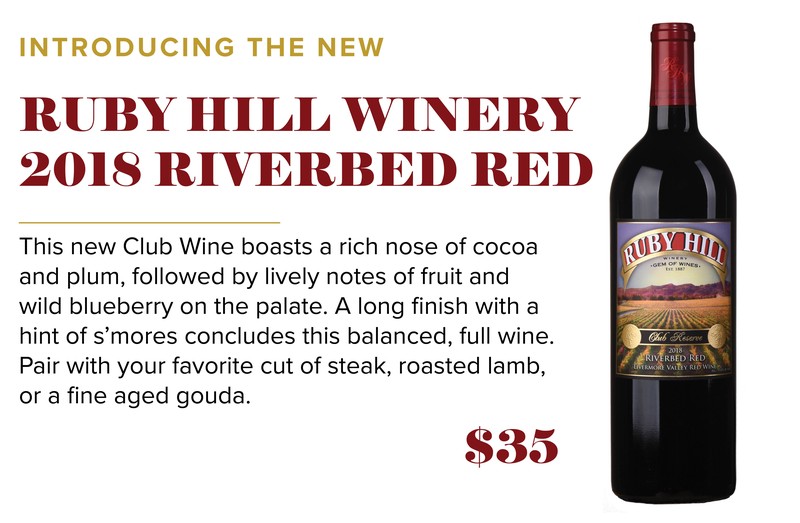
Wisdom from the Vineyard: Dormancy
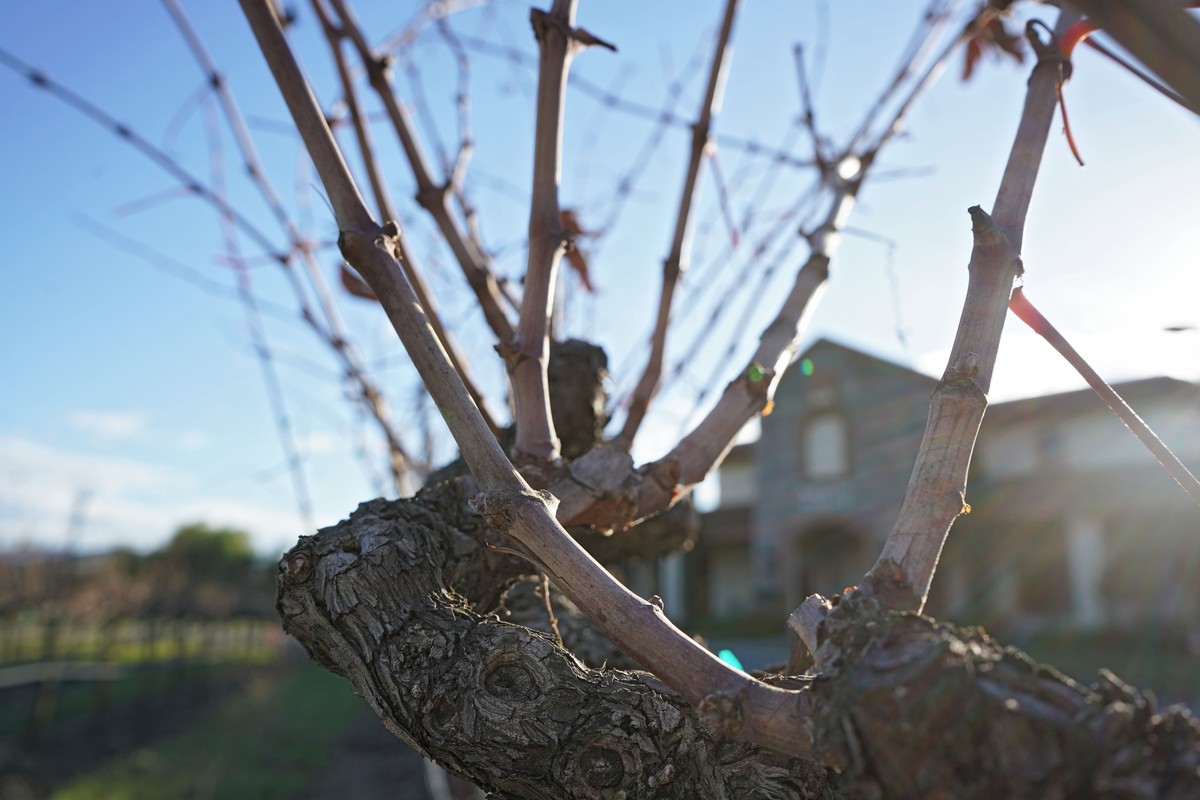 We've found wisdom in the pattern of the seasons and we think it's wise to pass on the lessons of these little vines. We're honored to take part in the legacy of agriculture, and aim to have our eyes open to what cultivation can teach us.
We've found wisdom in the pattern of the seasons and we think it's wise to pass on the lessons of these little vines. We're honored to take part in the legacy of agriculture, and aim to have our eyes open to what cultivation can teach us.
Beginning in the Late Middle ages, a celebration called “Plough Monday” was observed in Europe. On the second Monday of January, agricultural communities would commemorate the start of the planting season, returning to work after their holiday period. Though planting itself did not begin until the weather improved, Plough Monday was a sort of commencement. With a festive spirit, the ground would be tilled and prepared for the spring sowing.
We believe that if 14th century plowmen can celebrate Mondays, we can too. For many of us, entry into 2021 has been a bumpy ride. You might think it’s already the middle of January, but we think it’s okay to think of it as only the middle of January. We’re just getting started. It’s time to be optimistic, to prepare ourselves for the later seasons of planting. Instead of being frustrated with the things that we can’t control, like the changing of the seasons or when it is going to rain, we want to take a lesson from the communities of old. It’s winter now, but when the time comes to plant, we’ll be ready.
As it turns out, the middle of January is an important date in the calendar of the vineyard as well. After harvest, when the temperatures begin to cool, the vines enter a period of dormancy. Many plants have a dormant state to protect themselves from damage in cold seasons, but this state is especially important for vines. It is in this season that the vines take a rest from the hard work of their summer production, as well as preparing for bud burst and flowering later. Without this phase, the plants will not bud in the spring or attain any level of cold tolerance. This season also gives the grower an opportunity to check the nutritive qualities of the soil to ensure the vines have a good growing environment.
Just like the lovely vines here at Ruby Hill, we all need time to rest if we want to flourish. It’s vital that we check our soil, ensuring that we have the support we need to flourish. Self-care comes in many forms. There is no need to be discouraged by dormancy because it is a vital part of every life cycle. Without rest and nourishment of both brain and body, we’re on our way to burnout. Maybe now is a perfect time for a break!
As the vines exit dormancy, the process of pruning resumes. One purpose of pruning is to allow the sap of the plant to be well-distributed through the vines. This balances productivity and boosts the health of the branches. Some pruning actually prevents an amount of the fruit from growing, but this has the effect of lengthening the lifespan of the plant, which may be cut short by overproduction. In the pruning process, the branches are also often tied back into their neat rows which helps distribute the leafy growth, allowing the plant to catch as much sunshine as possible when the season comes. After pruning, the vines may look a bit pitiful, but in reality they are prepared to flourish in the coming seasons. The overall effect of pruning is to boost high-quality productivity, regulate growth, and encourage healthy ripening.
Perhaps you have felt pruned back lately, because some of us certainly have. We think this is an opportunity to take a moment to turn this around into good news. We’re going to make better things than ever, performing at our best. It will take some time to get there, but we’re determined to show that pruning is worth it. It’s the secret to good wine, and it might just be the secret to a good life too. If you want to see for yourself, just taste what Ruby Hill has to offer, and you can let us know!
In Wine There is Health
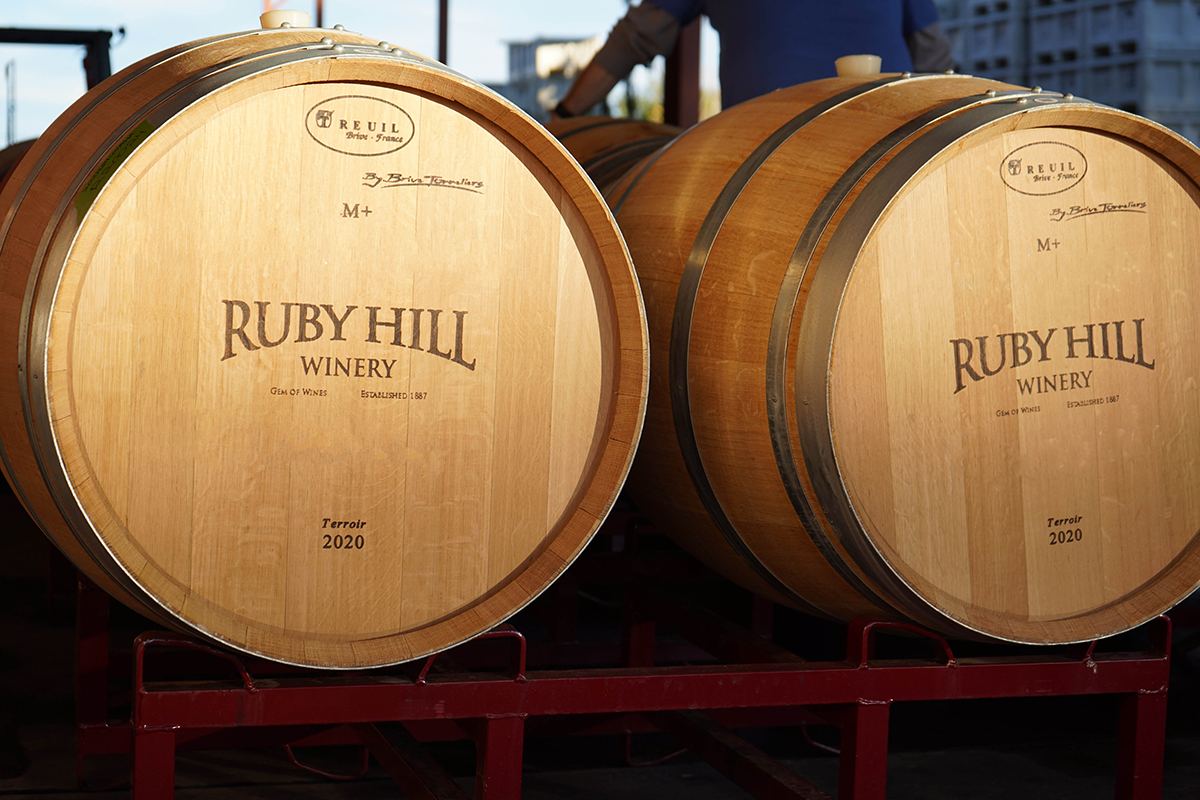
As we look at 2020 in the rearview mirror and begin to settle into 2021, many of us have been prompted to reflect on our goals and view of the future. We all want to live the good life, so what does that look like? We’ve taken the time to uncover a few ways that enjoying wine, our favorite pastime, will make for a better 2021.
Did you know that opening a wine bottle activates 14 muscles? That sounds like a great wind-down from a long day, and warm-up for a good evening. Anyone who enjoys a nice glass after a stressful day (which these days might seem like every day) is familiar with the relaxing effects of a delicious wine. It turns out that the alcohol content isn’t the only factor at play; a powerful plant compound called resveratrol has been linked to reduction of anxiety. Alexander Fleming, the Scottish physician and researcher who discovered penicillin, once remarked, “Penicillin cures, but wine makes people happy.” We agree, and we miss seeing our members smile as they savor their favorite Ruby Hill Wines. It turns out that Dr. Fleming was even more correct than he realized!
Further research into the health benefits of wine continually yields optimistic results. Compounds in red wine such as polyphenols and ethanol have been reliably linked to anti-inflammatory and immune-boosting results. While we won’t tell you to take it with your morning multivitamin, we’re thankful for every bit of immune boost we can get during cold and flu season! If you’re especially interested in anti-inflammatory effects, we recommend our Reserve Cabernet Sauvignon. This varietal is especially rich in procyanidins, compounds that help increase blood flow and combat inflammation. Some studies have also shown that red wine, especially when enjoyed with a meal, lowers cholesterol levels while improving levels of “good” cholesterol (HDL) and may even help combat obesity. The fermentation process of winemaking also benefits us winos! Fermented foods are good for digestion. The compounds that manifest during fermentation help take care of the good bacteria in your gut. When it comes to fermented foods, regularity is key, and the more the merrier! Consumption of other such foods, such as keifer and kimchi, will give your body an even greater probiotic boost.
Certain properties that are unique to wine allow it to stand above other forms of alcohol when it comes to health. Though alcohol is a known carcinogen, moderate wine consumption has been linked to decreased risk of many forms of cancer, as well as increasing survivability and quality of life. Red wine is also rich in antioxidants, reversing the negative oxidizing effects of most sources of alcohol. These powerful antioxidants help with the elimination of free radicals, which cause destruction of the body’s cells. Good news: dark chocolate has a hefty dose of antioxidants too, so it’s worth a few nibbles. And it’s not just chocolate: a recent study from the Journal of Alzheimer’s disease found that brain function was boosted and cognitive decline was slowed in individuals who enjoyed wine and cheese on a regular basis. While the findings are in the process of further testing, this news is exactly what we like to hear. Peacock Patch Zin and aged cheddar, here we come!
We do want to take a moment to recognize that the most important ingredient is moderation. This key allows you to unlock amazing health benefits while savoring your favorite wines. One to two glasses a day is linked to improved cardiovascular health and even decreased risk of cardiovascular disease. The Dietary Guideline for Americans, issued by the USDA and Human Health Services, does not recommend dramatically increasing alcohol consumption for the express goal of health. However, as we’ve discussed, moderate consumption of your favorite wine can have a great many enriching effects.
Ruby Hill Winery is here for you when you want something to savor!
For Auld Lang Syne: A Toast to the New Year
As 2020 comes to a close, we delight at the prospect of new beginnings. We have hope for 2021 and the surprises it will hold, but before we get there we want to say "sayonara!" to 2020 in style. New Year's Eve is a holiday of many traditions, both made to refelect on the past and anticipate the future. To appreciate the legacy of these practices, we've put together at a brief history of three of our favorite traditions: toasting the New Year, kissing and singing, and making resolutions.
Raising a toast with champagne has a long history, dating back as far as the Roman Empire. Under this regime, drinking wine was seen as a fundamental part of good health. In some eras, toasting to the Emperor with a glass of wine was compulsory before meals. When Julius Cesar adopted a new calendar in 46 AD, January 1st was decided upon as the start of the year. This was intended to honor Janus, the Roman God of beginnings. Of course, the ancient Romans began the tradition of celebrating the New Year with partying. Drinking and revelry have become integral to the celebration.
In the following centuries, toasting began to incorporate the actual clinking together of glasses. The "ring" of the glasses was meant to ward off evil. Later, it was rumored that it reduced the use of poison among noblemen and their enemies since toasting caused liquid to splash from one reveler's drink to another. The word "toast" itself came about in the late 17th century, since spiced bread (toast) and other snacks had commonly appeared as pairings with the celebratory booze. Sparkling Wine grew in popularity as the New Year's Eve drink of choice to celebrate opulence and luxury.
The practice of making resolutions has an even more illustrious history, starting upwards of 4,000 years ago in ancient Babylon. The New Year was celebrated with the planting of crops, and resolutions were made in order to start the season off optimistically and please their gods. Their commitments supposedly included such promises as repaying debts and returning borrowed farming equipment. The knights of the Middle Ages would make their resolution to remain knights by swearing their chivalry over a roasted peacock, which was called the "Peacock Vow." We prefer to make our resolutions over a glass of Peacock Patch Zinfandel, but to each their own.
The first recorded use of the actual phrase "New Year's resolutions" was in a bostonian newspaper in 1813. Two centuries later, it remains a value of our cultures as we seek the power of self improvement new beginnings--and often discover our weaknesses come March. No matter the level of "success" these resolutions offer a good opportunity to reflect on past goals and set your heart on the coming year's opportunities.
At the stroke of midnight, just as the New Year commences, it is common to kick off the New year with a smooch and a song. Both kissing and Auld Lang Syne are optional, but heartwarming when enjoyed with people you love. In English and German folklore, these midnight kisses strengthened budding romances and set a tone for the year to come. During the masquerade balls of the Renaissance, guests would remove their masks at midnight and kiss one another, symbolizing the removal of evil and begin the year with purity.
One Scottish New Year's Eve tradition took this even further, with guests attempting to kiss everyone in the room, but we admit that's not exactly the safest choice in 2020. Instead, the Scottish tradition that has become a standard of New Year celebrations is the Scottish folk tune "Auld Lang Syne." The poem was first penned by Robert Burns in 1788, but Guy Lombardo is credited with popularizing the song as a New Year's Eve staple in the United States when it appeared in a radio broadcast from New York’s Roosevelt Hotel at midnight on December 31, 1929. The lyrics are timeless, calling us to remember auld lang syne, which literally translates to "old long since" but is similar in meaning to "old time's sake."
There is a beautiful irony to joining in such old traditions to commemorate the New Year. We revel, even if we're at home this year, in the memories of the "good old days" while planning our goals and resolutions for the year ahead. If we ask why we celebrate the way we do, why we toast, sing, kiss, and promise, the answer is simple: For old time's sake, my dear, for old time's sake.
What to Make (and Drink) With Holiday Leftovers
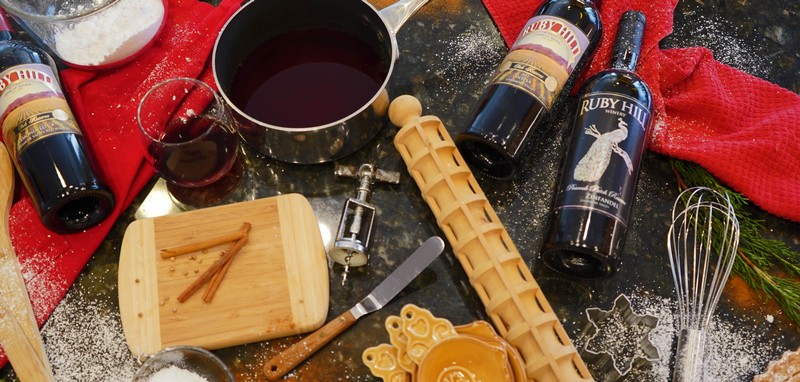
The tree is up, the presents are wrapped, and the holiday menu is planned. Why not start dreaming up something fun for the leftovers? If you're partying in place this year, you might find youself having a smaller group--and thus an abundance of leftovers. Using, freezing, or giving away your holiday leftovers is a great way to get creative and cut back on waste! We've rounded up a few ideas to help you re-invent the remants of your feast, and we've of course included some pairing ideas. Now, get some mulled wine simmering (we recommend Peacock Path Zin for this) and let's get cooking!
Leftover Prime Rib or Roast? Try this recipe for Roast Beef Hash from Elizabeth's Kitchen Diary.
This dish is a fantastic option for any leftover beef or lamb, and can work as a hearty and delicious dinner that takes less than 30 minutes to prepare. We would pair this meat n' potatoes classic with a rich bottle of our Armonia Lot #9.
If you're looking for cleverness points while dressing up leftover ham or pork belly, try this "Greens," Egg, and Ham Sandwich recipe!
Extra credit to whoever can quote the most poetry while enjoying this creative take on a classic ham sandwich. We recommend adding extra fancy cheese and a glass of Grapeful Red to make this even more special.
Transform that tupperware of leftover mashed potatoes into Mashed Potato Pancakes with just a few steps!
We don't really think that there's such a thing as "too much" mashed potatoes, but we also think it's fun to jazz them up a bit! This recipe is also ideal if you're tired of being in the kitchen because it comes together quite quickly. These savory cakes are crispy on the outside, fluffy on the inside, and will taste luxurious with a glass of our Reserve Chardonnay.
Made a huge batch of sauce? You can revive it in these Cranberry Sauce Muffins from Wallflower Kitchen!
If you only make it once or twice a year, it can be tough to figure out what to do with the leftovers. Now, we won't judge you if you want to just eat it straight, but these muffins are amazing. After all, it's not holiday baking if there's no sweets, and these are a great treat anytime--and vegan-friendly! Enjoy these with a splash of crisp Sauvignon Blanc and keep the holiday cheer alive.
We hope we've helped you up your leftover game and have some more fun in the kitchen. Now, if you don't have any leftover wine, we understand! Place an order today and come by for curbside pick-up this weekend. Get a full case of Armonia lot #9 for only $99.99 (that's not a typo!) or take advantage of our Sparkling Wine sale before it's gone.
Place Settings with Holiday Spirit
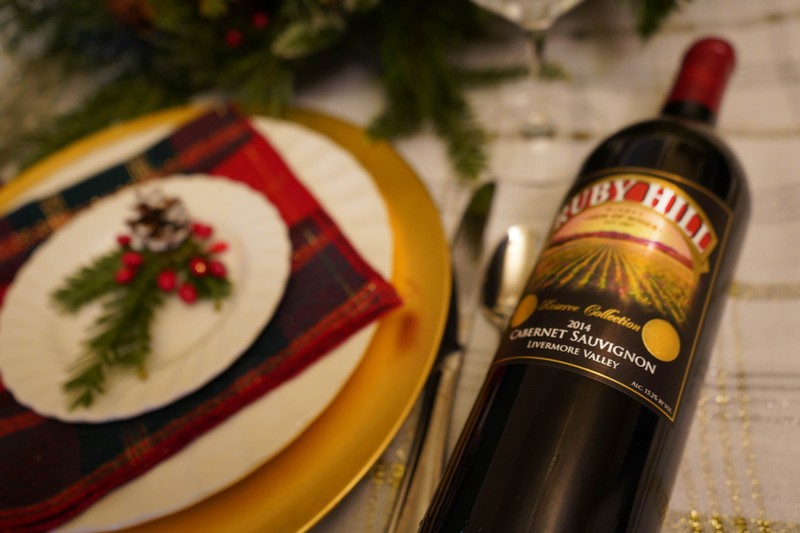
This year, many of us find ourselves looking forward to a Holly, Jolly, "Small-y" Holiday. We think it might be the perfect time to lay down new traditions and to find unique ways to make the season special. Decorations are at the heart of the holidays, and table settings are a fun and simple way to express your creativity. There's no right or wrong--rustic and chic, simple and elaborate--there's beauty in every setting! We've put together a few place settings modeled after our wine bottles and the spirit of the season and we hope to inspire you!
Simply Having a Colorful Christmas-wine: Grapeful Red.
Our iconic Grapeful Red is our ever-present reminder that life is too short to take too seriously! This colorful take on a classic Christmas table setting incorporates a touch of seasonal produce in the form of persimmons, as well as rich, festive reds and lively yellow. This setup is perfect for a casual holiday at home. If you'd like to put together a setting with this bottle, make sure to get our Winemaker's Selection 6-pack before it's gone, which features two Grapeful Red!
Bubbles and Baubles: Sparkling Wine
Our spirits are bubbly just thinking about the New year! This setting plays on the green and gold of our delightful sparkling wine. We've completed the look with a gold-rimmed flute and a classy black napkin. Our Sparkling sale is on until the 31st, so it's high time to bring out the bubbly and toast to the end of the year.
Merry Cabernet, Darling - Reserve Cabernet Sauvignon
Our award-winning Reserve Cabernet Sauvignon is a perfect pair for a classic table setting. With its red foil top to the gold seal, this evergreen color combination shines beautifully. Pair your preferred holiday plaid with some simple white plates and your favorite bottle of wine, and you've got a classy table setting! Buy our reserve Cabernet Sauvignon on its own, or find it in the Winemaker's Selection 6-pack.
All I want for Christmas is Jewel - Jewel Collection Cabernet Sauvignon.
Our Jewel Cab stands alone as the shining star of any meal, which makes it perfect for a special dinner. This place setting is both refined and rustic, combining elegance with natural elements to "spruce" things up.
As Perry Como sings, "for the holidays you can't beat home sweet home." We hope that you have a warm, cozy, and cheerful home this year!
Don't forget to place your orders to pick up this weekend! Our Winemaker's Selection is a steal of a 6-pack and includes our Grapeful Red and Reserve Cab, as mentioned above, as well as our club wine Intesa. Also, make sure you don't miss out on our Sparkling Sale while it's still here! We're open for curbside pickup Saturday and Sunday from 12-4pm.
Deck the Halls with Sustainability
Ruby Hill Winery has had a commitment to sustainability since our beginning. We recycle, use solar power, and are constantly looking for ways to cut back on waste and care for the planet. Our boxes are made from recycled cardboard and all of our wine corks are made from a by-product of sugarcane production that otherwise goes to waste. After all we affirm that the best wines come from the best grapes, which means we want to nourish our vines with the healthiest soil and climate possible.
End-of-year festivities have a tendency to bring a bit of chaos and clutter into our lives, but there are also opportunities to conserve creatively! Below, we have assembled a few ideas of how to reduce waste this holiday season as our times of decorating and gift-giving continue.
- Decorate using what's in your home
With just a bowl, ornaments, and Christmas lights, you can create a luminous display to show off a bottle of wine! We paired gold and silver baubles with a gleaming red Peacock Patch Zinfandel. If you've got other spare wine bottles around, we also love the look of wine bottles as vases! You can incorporate bright red flowers, pinecones, and clippings from your Christmas tree.
-
Give the gift of experiences or virtual subscriptions
Instead of purchasing something that can collect dust, opting for gifts of experience can show a lot of thought and reduce waste! For bookworms, a subscription to Libro FM allows your loved one to enjoy quality audiobooks while supporting a local bookstore of their choice. For friends who have yet to discover your favorite wines, a wine club membership makes for an unforgettable gift that keeps on giving. Lastly, for creative friends, an online class through Skillshare gives the gift of new skills and knowledge. -
Shop at local stores and boutiques
When you do your shopping locally, not only do you cultivate the character of the community by supporting family-owned businesses, you also reduce the environmental impact of your items. We recommend calling shops ahead of time or checking websites to see how their capacity limits and other COVID-related precautions may affect your visit. In our experience, little shops spark holiday joy in a way no department store can. For a listing of a few of the boutique shops in the Tri-Valley, click here.
In this season of giving and receiving, we are thankful to be here for you. From all of the Ruby Hill family, we hope that we've inspired some smiles and creativity, and that you will feel love and warmth this December and beyond.
If you would like to decorate your table with Ruby Hill wines, or just enjoy few bottles, we are open for curbside pickup every Saturday and Sunday from 12pm-4pm. If you're interested in giving the gift of membership, please email us at membership@rubyhillwinery.net.
Sue's Holiday Picks
Sue Couls is one of our beloved tasting room managers and decorator extraordinaire. She manages all of our retail and keeps the tasting room beautiful in every season. During the week, we had a visit with Sue to hear about her favorite items in the tasting room. With the holidays fast approaching, we want to make sure we are prepared to find the right present for every parent, friend, spouse, and colleague on our lists.
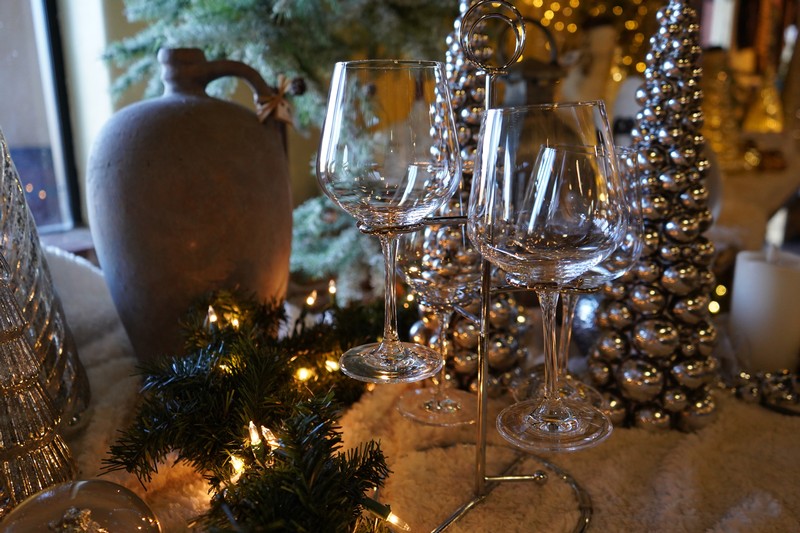
One of Sue's bestsellers are these wine glass holders. Each holder can carry up to 4 wine glasses. At Ruby Hill, we use these to serve our wine flights, but there are many possibilities! Lovingly called "trees" by our staff, each branch can hold a different wine, bringing a bit of the wine tasting experience into your home. If your personal collection allows it, you could even do a parallel tasting of four vintages of the same wine and see how they compare.
Sue mentions that these trees are perfect for intimate dinners. She calls them exciting and interactive, making them a perfect enhancement to a Holiday dinner. Bring a bit of flair and specialty to a night in--wrap up a wine tree under your Christmas tree!
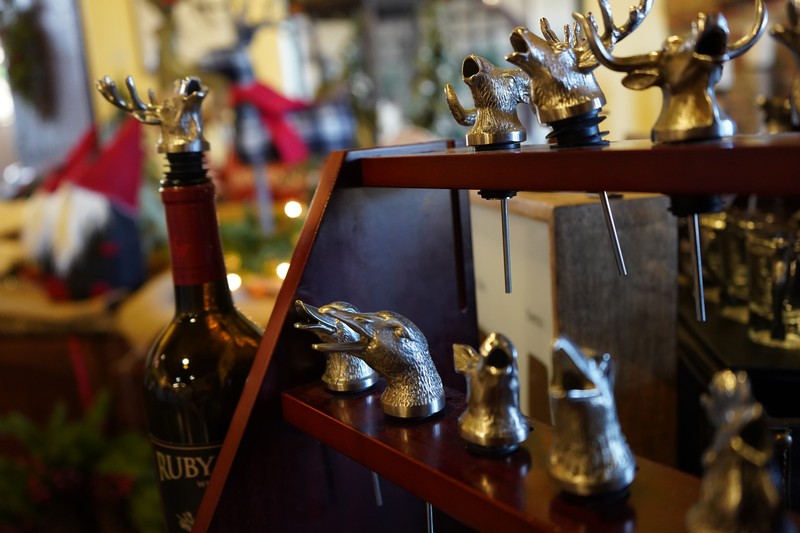
Sue also curates a collection of her favorite wine aerators. Ruby Hill's tasting room boasts a menagerie of these unique tools. Made of 100% stainless steel, these durable aerators add character to any wine bottle. According to Sue, they allow you to serve wine with the perfect aeration with a flair of personal novelty. With a dose of whimsy, you can enjoy a wine straight from the reindeer's mouth!
Sue has also planted a dazzling forest of her favorite lighted trees. These metallic glass trees bring warm, festive light into our tasting room. Simple battery-powered gleam means optimal decoration opportunities with no cluttered cords! After a year of some uncertainty and darkness, Sue treasures the bright, luminous cheer that these trees can bring to every home.
A friendly spirit of warmth and generosity is a welcome comfort in every situation. Sue's light shines through in the beauty she brings to the Ruby Hill tasting room, and she invites everyone to bring that charm home with them. Whether for your own living room or wrapped up for a friend, all of these gifts are sure to spark joy. To help share the delight, all of our tasting room retail items are 20% off for a limited time, so we'd love to see you here soon!
Enjoy complimentary ground shipping when you order 6 or more bottles.
Sign Up For Our Newsletter
Keep up to date on the latest wine releases, events, and promotions.
